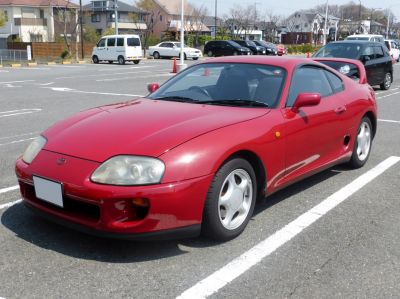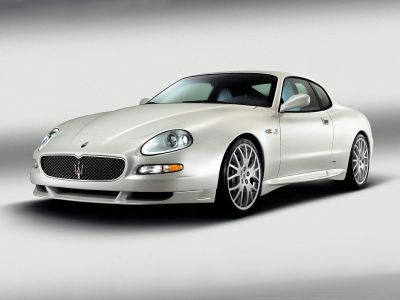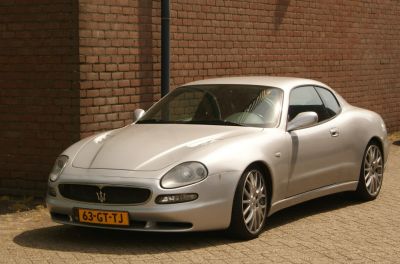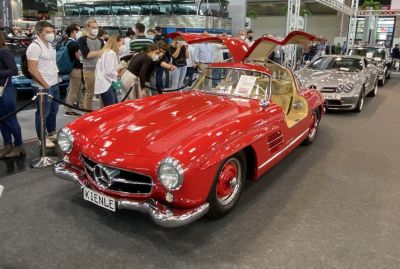 1969 Ferrari 365 GTB4 (Daytona) Dimensions, Size & Specs
1969 Ferrari 365 GTB4 (Daytona) Dimensions, Size & SpecsMeasurements of the 1969 Ferrari 365 GTB4, engineered for optimal performance and comfort
| Dimensions | |
|---|---|
| Length: | 4425 mm174.2 in14.5 ft |
| Width: | 1760 mm69.3 in5.8 ft |
| Height: | 1245 mm49.0 in4.1 ft |
| Weight Specifications | |
| Curb Weight: | 1280 kg2822 lbs |
| Tire Specifications | |
| Rims Size: | 15-inch rims:
|
| Tire Size: |
|
The Ferrari 365 GTB4, famously known as the Daytona, was produced from 1969 to 1973 and stands as a timeless classic in Ferrari's lineup of high-performance coupes. This model measures 4425 mm (174.2 inches) in length, 1760 mm (69.3 inches) in width, and 1245 mm (49 inches) in height, giving it an elegantly low and wide stance reflective of its sporty nature. Weighing in at a curb weight of approximately 1280 kg (2822 lbs), the Daytona balances its powerful performance with a relatively lightweight frame. The car rides on 15-inch rims sized at 7.5J x 15, paired with 215/70 VR15 tires which enhance grip and handling, contributing to the car's legendary driving dynamics. As a grand tourer coupe, the Ferrari 365 GTB4 Daytona combines aggressive styling and compact dimensions that offer a distinctive presence on the road while delivering the thrilling experience expected from Ferrari. Its aerodynamic profile, comparatively low height, and wide footprint not only underline its racing pedigree but also make it a cherished collector’s car, exemplifying Italian engineering and design from the golden era of sports cars.
Discover the standout features that make the 1969 Ferrari 365 GTB4 a leader in its class
Have a question? Please check our knowledgebase first.
The Ferrari 365 GTB4, commonly known as the Daytona, measures 4425 mm (174.2 inches) in length, 1760 mm (69.3 inches) in width, and 1245 mm (49.0 inches) in height. These dimensions contribute to its iconic sleek, aerodynamic coupe design typical of late 1960s grand tourers, combining a relatively compact footprint with sporty proportions and low stance for enhanced performance and road presence.
The curb weight of the 1969 Ferrari 365 GTB4 (Daytona) is 1280 kg (2822 lbs). This relatively light weight, especially for a front-engine V12 grand tourer of its era, helped the Daytona achieve impressive performance figures. The reduced weight improves acceleration, handling agility, and braking efficiency, allowing the car to deliver exhilarating driving dynamics in line with Ferrari's sports car traditions.
The Ferrari 365 GTB4 rides on 7.5J x 15 rims paired with 215/70 VR15 tires. The 15-inch wheels provide a classic yet performance-oriented look, while the 215 mm width tires strike a balance between grip and ride comfort. The 'VR' speed rating indicates the tires can safely handle very high speeds, complementing the car's powerful V12 engine and ensuring confident handling at speed.
With a length of 4425 mm (174.2 inches) and width of 1760 mm (69.3 inches), the Ferrari 365 GTB4 (Daytona) fits comfortably into most standard residential garages, which typically accommodate vehicles up to around 2.5 meters (98 inches) wide and 5 meters (197 inches) long. Its low height of 1245 mm (49 inches) also means it won’t face issues with overhead clearance. Owners should ensure the garage door width is sufficient and allow space for opening the car doors safely.
Compared to the Ferrari 330 GT 2+2, the 365 GTB4 Daytona is notably more compact and sports-focused. The 365 GTB4 is about 4425 mm (174.2 inches) long and 1760 mm (69.3 inches) wide, while the 330 GT 2+2 measured roughly 4660 mm (183.5 inches) long and 1760 mm (69.3 inches) wide. The Daytona is lower and lighter at 1280 kg (2822 lbs) versus the 330 GT's heavier curb weight, reflecting its design emphasis on performance and agility instead of grand touring luxury and four-seat accommodation.
The Ferrari 365 GTB4 (Daytona) sits comfortably within the typical grand tourer size range of its era. Its length of 4425 mm (174.2 inches) and width of 1760 mm (69.3 inches) are slightly more compact than contemporaries like the Jaguar E-Type Series III (approx 4485 mm long) and the Aston Martin DBS (approx 4620 mm long). The Daytona’s low height of 1245 mm (49 inches) and light weight of 1280 kg (2822 lbs) also contribute to its more agile character relative to some bulkier rivals, making it a driver’s favorite among big GT cars.
Despite its relatively compact exterior of 4425 mm length and 1760 mm width, the Ferrari 365 GTB4 (Daytona) offers a driver-focused two-seat coupe interior. The design prioritizes sporty ergonomics over rear passenger space, as it is strictly a two-seat model with minimal rear space for storage or passengers. Cabin height at 1245 mm dictates a low-slung seating position, enhancing the sporty feel but limiting headroom for taller occupants.
The Ferrari 365 GTB4 (Daytona) features a modest trunk space consistent with its grand tourer coupe layout, but specific volume data is sparse given its classic design focus on performance and style rather than cargo capacity. The rear hatch gives reasonable access to luggage storage behind the seats, sufficient for light touring gear. The trunk size is smaller than modern GT cars but typical for late 1960s sports coupes.
The Ferrari 365 GTB4, popularly called the Daytona, is a two-seat grand tourer coupe produced between 1969 and 1973. Renowned for its front-engine V12 layout and classic styling, it was designed to be Ferrari’s answer to high-speed sports cars, combining outright power with refined touring comfort. This model is celebrated as one of Ferrari's iconic cars from the late 1960s and early 1970s.
The Ferrari 365 GTB4 Daytona’s 7.5J x 15 rims paired with 215/70 VR15 tires are consistent with performance standards of the late 1960s. These relatively narrow but high-profile tires provide a balance of grip, ride comfort, and road feedback. The 15-inch rims retain classic aesthetics while the tire dimensions help maintain predictable steering response and stability at high speeds, essential for the car’s grand touring and sporty nature.
Discover similar sized cars.

| Production: | 1964-1967 |
|---|---|
| Model Year: | 1964 |
| Length: | 4460 mm175.6 in |
| Width: | 1730 mm68.1 in |
| Height: | 1230 mm48.4 in |

| Production: | 1993-2002 |
|---|---|
| Model Year: | 1993 |
| Length: | 4520 mm178.0 in |
| Width: | 1810 mm71.3 in |
| Height: | 1275 mm50.2 in |

| Production: | 2004-2007 |
|---|---|
| Model Year: | 2004 |
| Length: | 4523 mm178.1 in |
| Width: | 1822 mm71.7 in |
| Height: | 1295 mm51.0 in |

| Production: | 1998-2002 |
|---|---|
| Model Year: | 1998 |
| Length: | 4510 mm177.6 in |
| Width: | 1820 mm71.7 in |
| Height: | 1310 mm51.6 in |

| Production: | 2002-2007 |
|---|---|
| Model Year: | 2002 |
| Length: | 4523 mm178.1 in |
| Width: | 1822 mm71.7 in |
| Height: | 1305 mm51.4 in |

| Production: | 1954-1957 |
|---|---|
| Model Year: | 1954 |
| Length: | 4520 mm178.0 in |
| Width: | 1790 mm70.5 in |
| Height: | 1300 mm51.2 in |
